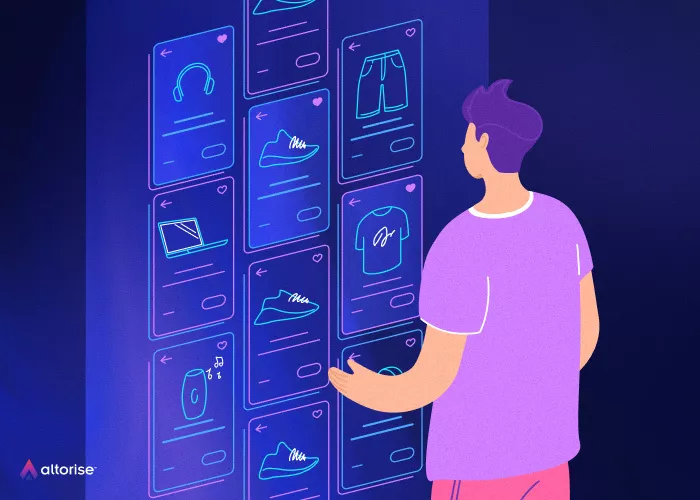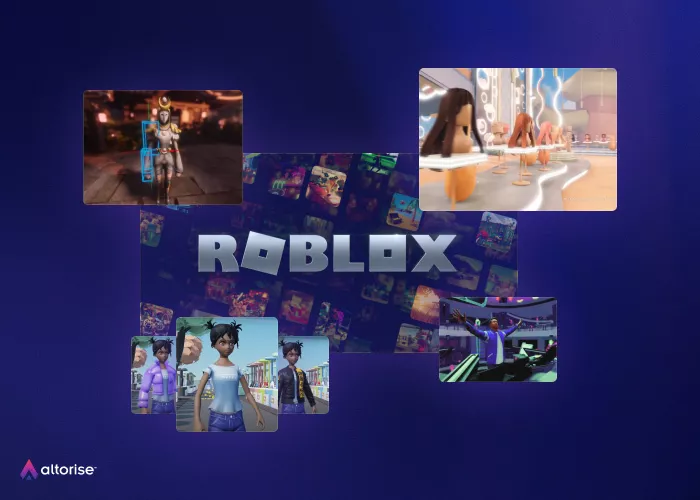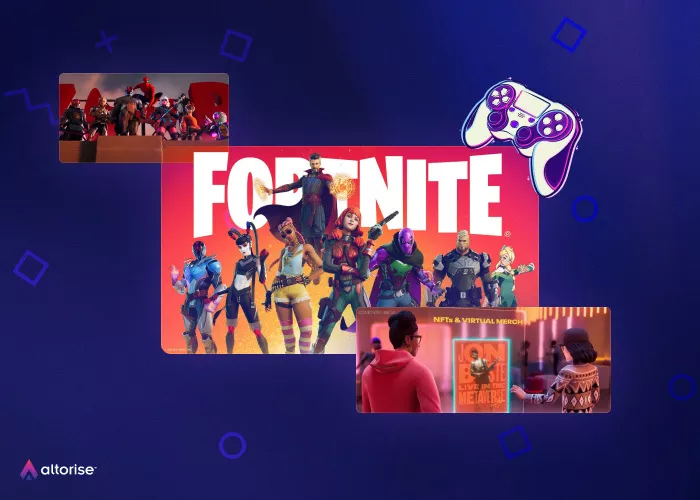Welcome to the future, where technology and imagination have collided to create the Metaverse, a new dimension of human interaction and innovation.
A digital world that blurs the lines between the physical and digital realms, where people can seamlessly interact with each other and with digital objects just like in the real world.
An immersive and interactive environment that offers endless possibilities for human interaction, creativity, and innovation.
The ultimate sandbox for human interaction, creativity and innovation. Let’s explore the Metaverse and its potential, from its business opportunities to its impact on human interaction and society.
What is the Metaverse?

Think of the Metaverse as a digital playground of digital worlds that allows people to interact with each other and with digital objects.
The Metaverse is like a digital wonderland, where technology is the gateway and imagination is the limit.
It's a virtual universe where you can explore new worlds, connect with others, and create your own digital experiences with virtual reality, augmented reality, and other forms of immersive technology.
How is the Metaverse going to help marketers?

The Metaverse presents a wealth of opportunities for marketers to engage with customers in new and innovative ways.
It provides a new platform for brands to create immersive and interactive experiences for their customers, which can drive engagement and increase brand loyalty.
The Metaverse provides an immersive and interactive environment for marketers to create brand experiences that are more engaging and memorable than traditional marketing methods.
It allows for more personalization, which can be used to create tailored experiences for different segments of customers, providing a more relevant and meaningful experience.
In the Metaverse, marketers collect data on customer behaviour, preferences, and interactions, which is further used to create more effective marketing campaigns to improve customer engagement.
The Metaverse is also used to create new and innovative forms of advertising, such as virtual billboards, product demonstrations and interactive brand experiences.
Virtual storefronts and e-commerce in the Metaverse provides new opportunities for brands to sell products, and drive sales.
Brands create virtual events, trade shows, and product launches, reaching a global audience, and providing more engaging and interactive experiences.
Why are companies interested in the Metaverse?

Companies are interested in the Metaverse because it represents a new and exciting opportunity to engage with customers and create new revenue streams.
The Metaverse provides new opportunities for companies to monetize their products and services. For example, creating virtual storefronts, selling virtual goods and services, and offering virtual experiences. The Metaverse also provides a new avenue for companies to advertise and promote their products and services.
Companies are also interested in the Metaverse because it is an emerging technology and being an early adopter can give them a competitive advantage.
Companies that are able to understand and utilize the Metaverse early on will be well-positioned to take advantage of new opportunities as they arise.
What strategies can brands in the Metaverse use to create new revenue streams?

Consumers tend to view brands that are present in the Metaverse as innovative and forward-thinking. As a result, the bar for delivering innovative experiences within the Metaverse is quite high.
Brands present in the Metaverse must deliver unique and engaging experiences by creating interactive virtual environments, games, and challenges, and explore new revenue streams by selling virtual goods and experiences. This is to maintain the perception of being innovative and forward-thinking.
What strategies can brands in the Metaverse use to prepare for the potential of direct sales?
While direct sales may not be front and center in the Metaverse right now, it is important for brands to start thinking ahead and planning for the future potential of the Metaverse as a platform for e-commerce, and explore new revenue streams.
Brands should plan for the future potential of Metaverse as an e-commerce platform by developing strategies for selling products, creating virtual storefronts or showrooms, developing virtual versions of products, and exploring new revenue streams like virtual goods and experiences, and NFTs.
What steps should brands take in the Metaverse to effectively capture value?

Brands should take a strategic approach by assessing skills and gaps, appointing a dedicated leader/team, and collaborating with the Metaverse ecosystem for successful virtual experiences and capturing value.
What are the potential risks and how can brands prepare for engaging with consumers in the Metaverse?
Brands need to be prepared for the potential risks of engaging with consumers online, such as negative feedback, misinterpretation of humour, and legal issues.
This includes having a plan in place, avoiding controversial topics, and having a dedicated team or person to monitor and respond to social media engagement.
How do brands adapt to new metrics as the Metaverse evolves?
Measuring ROI in the Metaverse requires focusing on specific metrics such as registered users, active users, engagement, brand awareness and sentiment.
Brands must also be adaptable as new metrics become available as the Metaverse evolves.
What are the key solutions to achieve interoperability in the Metaverse?

Interoperability, or the ability to transfer digital avatars and assets across multiple worlds, is a key aspect of the Metaverse. It allows users to move their avatars and assets from one virtual world to another, without losing their personalization, progress, and value.
Interoperability in the Metaverse can be achieved through the use of open standards and protocols, decentralized identity, tokenization and NFTs, and federated systems. These solutions allow users to transfer their avatars and assets across multiple virtual worlds, preserving personalization, progress, and value.
How is the legal framework likely to evolve in the Metaverse?

Currently, the legal framework for the Metaverse is largely undefined and is likely to be shaped by a variety of factors, including the actions of governments, the behavior of Metaverse users and developers, and the evolution of the technology itself.
The behaviour of Metaverse users and developers may also play a role in shaping the legal framework, as disputes and issues that arise within the Metaverse may lead to the development of laws and regulations that address those specific issues.
Ultimately, the evolution of the legal framework for the Metaverse will be shaped by a variety of factors and will likely take place over a period of time as the technology and usage of the Metaverse continue to evolve.
Discover the different target audiences present in the existing Metaverses
The Metaverse audience in Roblox

The audience for the Metaverse in Roblox is primarily made up of young people, with the majority of users being between the ages of 9 and 24.
Roblox has a diverse user base, with users from all over the world, but the majority of its users are from the United States, Canada, and the United Kingdom.
One of the unique aspects of the Metaverse in Roblox is that it is highly interactive, with users able to create and customize their own avatars, as well as build and explore virtual worlds.
This level of interactivity and user-generated content has made Roblox particularly appealing to younger audiences, who are often more engaged and active in these types of virtual environments.
Roblox has a strong social aspect, allowing users to interact with each other through chat, multiplayer games and other social features. This has helped to create a sense of community among users, which has also contributed to the platform's popularity among young people.
The Metaverse audience in Fortnite

The audience for the Metaverse in Fortnite is primarily made up of gamers, specifically those who play the popular video game Fortnite.
The Metaverse in Fortnite is a virtual world where players can interact with each other, participate in events and challenges, and purchase virtual goods.
Fortnite has a massive and dedicated player base, with over 400 million registered players as of 2023.
The Metaverse audience in Decentraland

The audience for the Metaverse in Decentraland is made up of a diverse group of individuals, including gamers, virtual reality enthusiasts, blockchain enthusiasts, and those interested in decentralized technology.
Decentraland is a virtual world built on the Ethereum blockchain, where users can create, experience, and monetize content and applications. The platform allows users to purchase and own virtual land, as well as create and trade virtual items using cryptocurrency.
This audience is tech-savvy and interested in the intersection of technology, gaming, and virtual reality. The audience overlaps with those interested in non-fungible tokens (NFTs) and the growing digital art market.
The Metaverse audience in Minecraft

The audience for the Metaverse in Minecraft is primarily made up of gamers, specifically those who play the popular video game Minecraft. Minecraft is a sandbox-style game that allows players to build and explore virtual worlds using blocks.
The audience for Minecraft is broad and diverse, with a wide range of players from all over the world. Minecraft also has a large streaming and eSports community, which has helped to attract a wide range of players.
The game's popularity and versatility have also led to the development of a large and active modding community, which has helped to expand the game's features and appeal.
Concluding thoughts
The Metaverse is a vast and rapidly evolving frontier, brimming with opportunities for brands to engage with customers and create immersive and interactive experiences. But, as with any uncharted territory, it's essential to approach it with caution.
Brands should carefully assess the risks and opportunities, understand their target audience, and develop a strategy that is appropriate for the culture of the Metaverse.
Marketing is just the tip of the iceberg, as the Metaverse can be leveraged to create value across the enterprise- from virtual showrooms and product demonstrations to remote collaboration and virtual onboarding.
Brands should start planning and executing their Metaverse strategy now to stay ahead of the curve and benefit most from the future of the Metaverse.
But, they should also be prepared to adapt as new opportunities arise, and the Metaverse continues to evolve. In short, approach the Metaverse with caution, but also with a sense of determination to capture its potential.
Are you ready to take your brand to the next level in the Metaverse? Join us at Altorise as we explore the potential of the Metaverse and discover new ways to engage with customers and create immersive and interactive experiences. From virtual storefronts to virtual events, the Metaverse offers endless opportunities for growth and innovation. Let's start planning your Metaverse strategy today.


